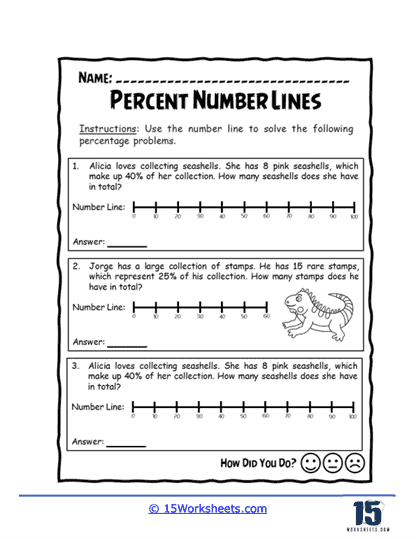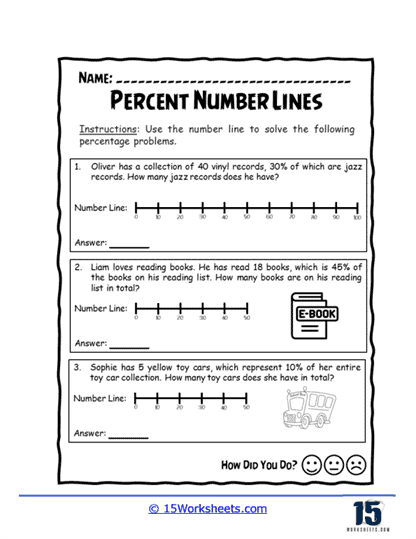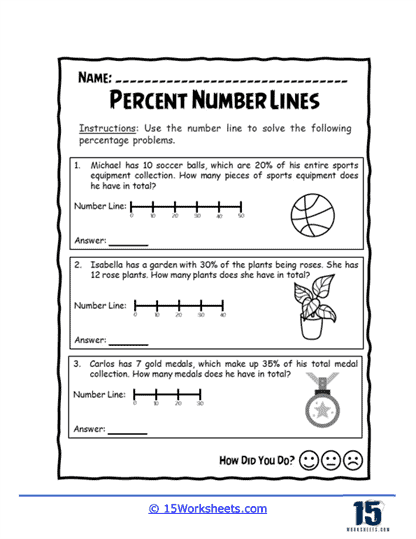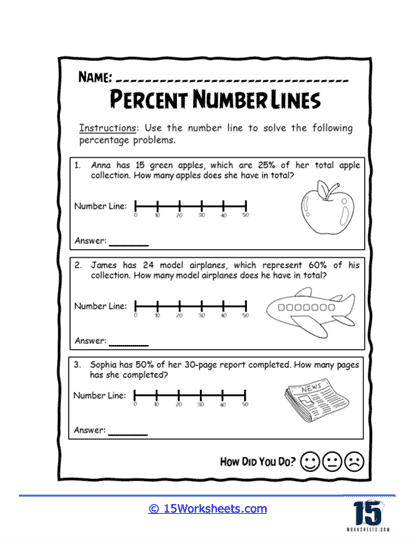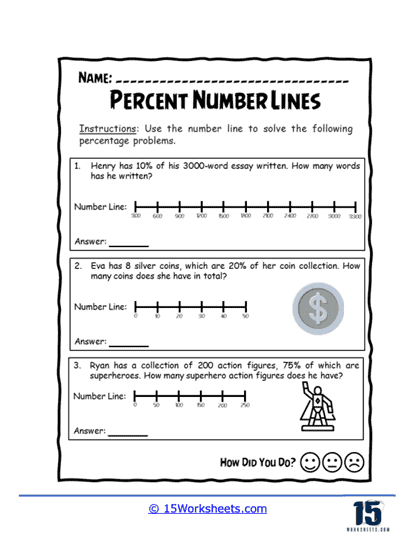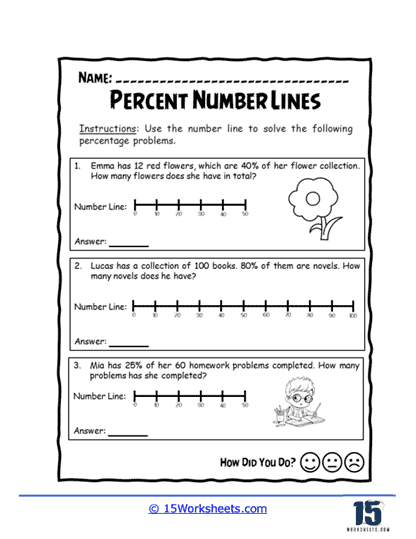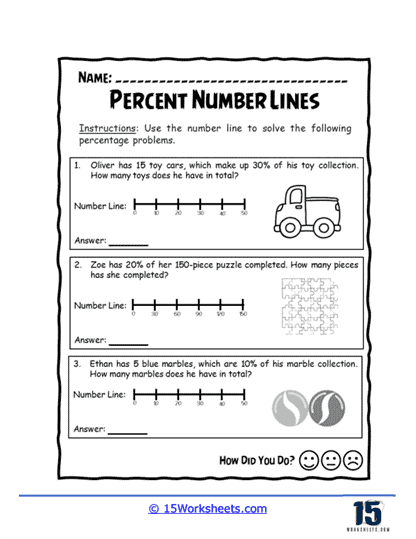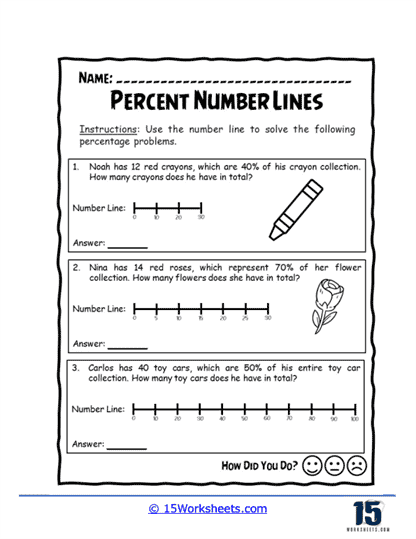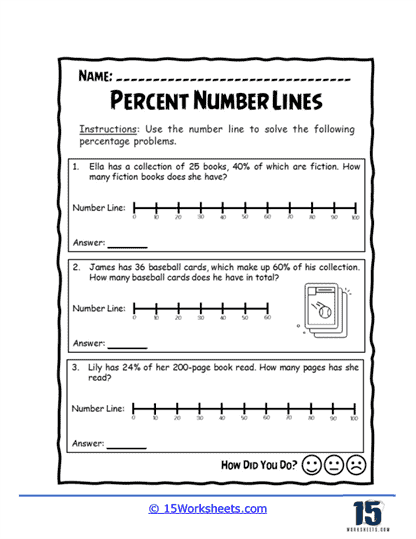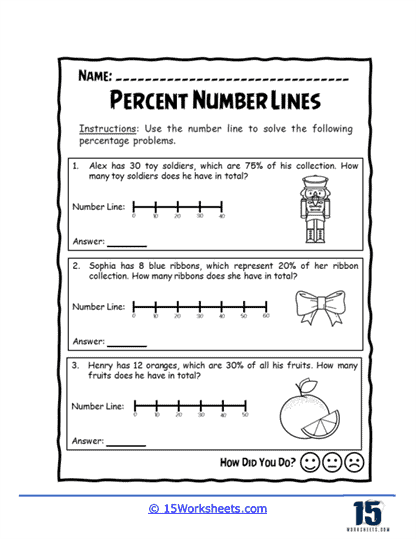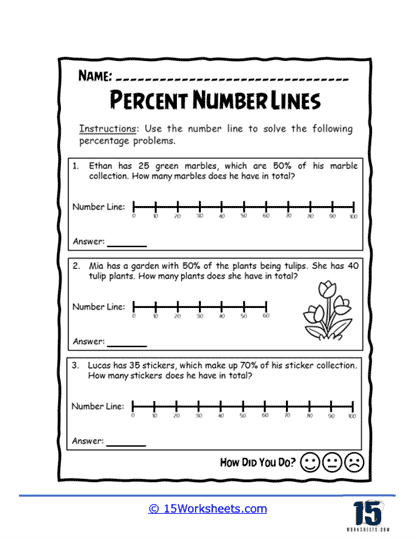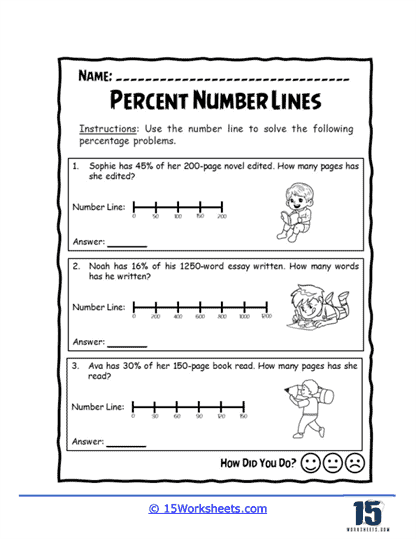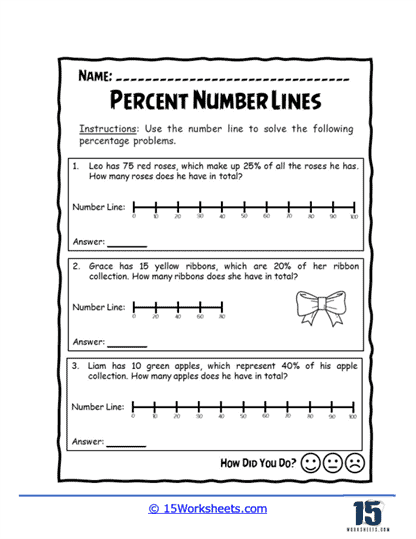Percentages on Number Lines Worksheets
About These 15 Worksheets
These worksheets will help students visualize and calculate percentages by using number lines. These worksheets serve as a bridge between abstract numerical concepts and tangible, visual representations, allowing students to develop a deeper understanding of percentages. The use of number lines in these worksheets makes it easier for students to grasp the concept of percentages as a part of a whole, which is an essential skill in many areas of mathematics and everyday life.
One of the primary features of these worksheets is the presentation of real-life scenarios where students are asked to calculate a total or find a missing value based on a given percentage. For example, a problem might involve a student who has a certain number of stamps, representing a specific percentage of their entire collection, and the task is to find the total number of stamps. These types of problems help students connect the concept of percentages to situations they might encounter in their daily lives, such as calculating discounts, understanding proportions, or determining percentages of quantities.
In each problem, a number line is provided as a visual aid. The number line is typically marked with increments, such as 10%, 20%, 30%, and so on, up to 100%. Students use this number line to determine the total or missing value by aligning the given percentage with its corresponding point on the line. This visual representation reinforces the concept that percentages are parts of a whole and helps students understand how different percentages relate to each other. For example, if a problem states that 15 items represent 30% of a collection, students can use the number line to see how this percentage fits into the whole and then calculate the total number.
These worksheets cover a variety of scenarios, each designed to challenge students in different ways. Some problems might involve calculating the total number of items based on a given percentage, while others might ask students to determine the percentage based on the given number of items. For instance, a worksheet might present a problem where a student has read 45 pages of a 200-page book, and they need to determine what percentage of the book has been completed. These types of exercises encourage students to think critically about the relationship between the part and the whole and how percentages represent this relationship.
Another key element of these worksheets is the use of different contexts to keep students engaged and to show the versatility of percentages. Problems might involve various scenarios such as collecting seashells, completing a puzzle, or editing a manuscript. By varying the context, these worksheets keep the learning experience fresh and interesting, helping students see that the concept of percentages is applicable in many different areas. This approach also aids in retention, as students are more likely to remember how to calculate percentages when they have practiced the concept in multiple, varied situations.
The skills taught by these worksheets are fundamental to understanding percentages and their application in real-world situations. By practicing with these worksheets, students learn how to translate a percentage into a numerical value and vice versa. This skill is essential for tasks such as calculating discounts while shopping, understanding statistics, or managing budgets. Moreover, the use of number lines helps students develop a more intuitive sense of how percentages work, making it easier for them to apply this knowledge in various contexts.
These worksheets help students build confidence in their math skills by providing a structured, step-by-step approach to solving percentage problems. The number line serves as a guide, helping students visualize the problem and see the relationships between the numbers involved. This visual aid reduces the cognitive load, making it easier for students to focus on the mathematical process rather than getting lost in the numbers. Over time, as students become more comfortable with these concepts, they will be able to solve percentage problems more quickly and accurately, both with and without the aid of a number line.
Another important aspect of these worksheets is that they encourage students to check their work and think critically about their answers. By using the number line, students can easily see if their answer makes sense in the context of the problem. For example, if a student calculates that 10 items represent 50% of a collection, they can use the number line to see that the total should be 20 items, and adjust their calculation if necessary. This type of self-checking is a valuable skill in mathematics, as it helps students develop a habit of verifying their work and ensures that they are not simply guessing or applying formulas without understanding the underlying concepts.
These worksheets often include a variety of problem types, from simple calculations to more complex multi-step problems. This variety ensures that students are challenged at an appropriate level and are given the opportunity to apply their knowledge in different ways. For example, a simple problem might ask students to find the total number of items based on a given percentage, while a more complex problem might require them to first calculate a percentage and then use that information to solve a related problem. This progression helps students build a deeper understanding of percentages and prepares them for more advanced math topics.

